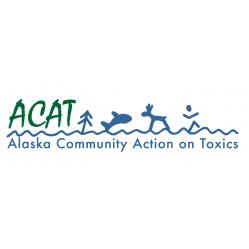

Who We Are
Our community-based approach is guided by our core values:
 |
| photo by Kat PinetCommunity right-to-know: ACAT believes that everyone has a right to know about the health and environmental hazards of chemicals that are present in our air, water, and soil, as well as in foods. |
- Environmental justice: Recognizing that people of color and the poor are disproportionately harmed by the siting and toxic releases from military and industrial facilities, ACAT seeks to remedy this through community-based research and advocacy.
Principles of Environmental Justice
- Precautionary principle: The precautionary principle guides us to protect health by preventing exposures to harmful chemicals. If toxics are present and suspected to cause health problems, we believe ways to limit and avoid unnecessary exposure to those chemicals should be taken. The precautionary principle means that it is “better to be safe than sorry.”
- Elimination of the production and release of toxics: Phase out and replace chemicals that are persistent, bioaccumulative, and harmful to health with safe alternatives.
- Rights and sovereignty of Indigenous peoples
- Culture of caring and wellness
What We Do
Alaska Community Action on Toxics (ACAT) was founded by Pamela K. Miller in December 1997 in response to repeated requests from Alaskans who wanted technical assistance with environmental contaminants.
Pam came to Alaska in 1989 to work for Greenpeace as a research biologist. In 1994 she established the Community Toxics Investigative and Advocacy Project for Greenpeace Alaska. When Greenpeace leaders closed the U.S. toxics campaign in 1997 and shifted their focus to global climate change, Pam left Greenpeace and formed Alaska Community Action on Toxics in order to keep commitments she had made to people throughout Alaska who had asked for help with toxics. One of these people was Yupik elder Annie Alowa who had been trying for two decades to get the military to clean up its toxic legacy on St. Lawrence Island.
 |
|
Annie Alowa (1924-1999), St. Lawrence Island |
Annie was a former health aide from Savoonga, a Yup’ik village on St. Lawrence Island, located in the Bering Sea just forty miles from Russia. In 1952, the U.S. Air Force established a base at Northeast Cape on the Island. A decade later Annie began to notice serious health problems among island residents – including members of her own family – who lived, worked, and harvested greens, berries, fish, and wildlife from the Northeast Cape area. Annie began to see cancer, low birth weights, and miscarriages among her people.
When the military vacated Northeast Cape in the early 1970s, they left at least thirty-four contaminated sites in a nine-square-mile area. Contamination includes at least 220,000 gallons of spilt fuel, as well as heavy metals, asbestos, solvents, and PCBs which are known to cause cancer. One of several barrel dumps in the area contained over 29,500 buried drums. There were also buildings and other structures, as well as large bales of copper wire, which had trapped and killed reindeer by starvation.
Pam worked with Annie seeking justice and accountability from the military. Annie died of cancer in February 1999. Annie’s perseverance continues to inspire ACAT’s work to protect environmental health and assure justice.
Details
| (907) 717-4392 | |
| info@akaction.org | |
| Courtney Osolnik | |
| Office Manager | |
| http://akaction.org |


